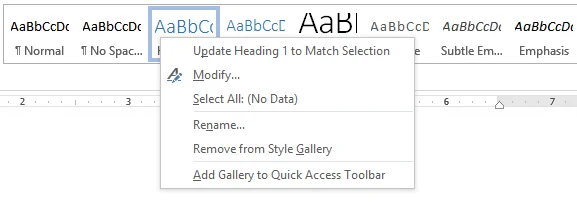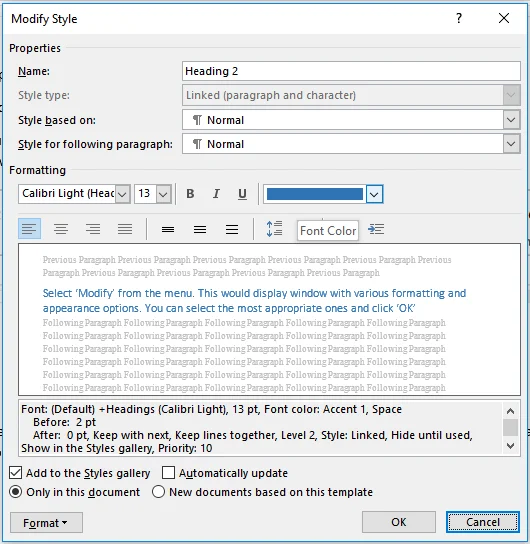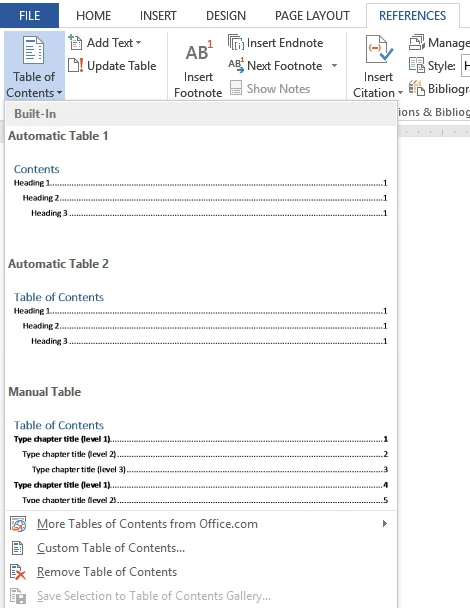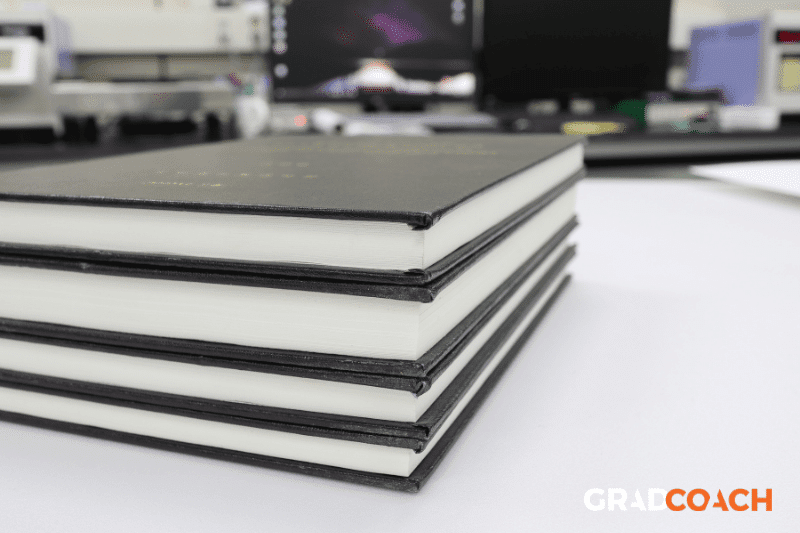- How it works

"Christmas Offer"
Terms & conditions.
As the Christmas season is upon us, we find ourselves reflecting on the past year and those who we have helped to shape their future. It’s been quite a year for us all! The end of the year brings no greater joy than the opportunity to express to you Christmas greetings and good wishes.
At this special time of year, Research Prospect brings joyful discount of 10% on all its services. May your Christmas and New Year be filled with joy.
We are looking back with appreciation for your loyalty and looking forward to moving into the New Year together.
"Claim this offer"
In unfamiliar and hard times, we have stuck by you. This Christmas, Research Prospect brings you all the joy with exciting discount of 10% on all its services.
Offer valid till 5-1-2024
We love being your partner in success. We know you have been working hard lately, take a break this holiday season to spend time with your loved ones while we make sure you succeed in your academics
Discount code: RP0996Y

How to Create the Best Table of Contents for a Dissertation
Published by Owen Ingram at August 12th, 2021 , Revised On September 20, 2023
“A table of contents is an essential part of any article, book, proceedings, essay , and paper with plenty of information. It requires providing the reader’s guidance about the position of the content.”
When preparing a dissertation , you may cram as much information into it as appropriate. The dissertation may be an extremely well-written one with a lot of valuable information to offer. Still, all that information could become perplexing if the reader cannot easily find the information.
The length of dissertations usually varies from a few pages to a few hundred pages, making it very difficult to find information that you may be after.
Instead of skimming through every page of the dissertation, there is a need for a guideline that directs the reader to the correct section of the dissertation and, more importantly, the correct page in the section.
Also read: The List of Figures and Tables in the Dissertation .
What is the Table of Contents in the Dissertation?
The table of contents is the section of a dissertation that guides each section of the dissertation paper’s contents.
Depending on the detail level in a table of contents, the most useful headings are listed to provide the reader concerning which page the said information may be found.
The table of contents is essentially a list found at the beginning of a dissertation , which contains names of the chapters, section titles and/or very brief descriptions, and page numbers indicated for each.
This allows the reader to look at the table of contents to locate the information needed from the dissertation. Having an effective table of contents is key to providing a seamless reading experience to the reader.
Here in this article, we will uncover every piece of information you need to know to write the dissertation’s abstract.
This article helps the readers on how to create the best table of contents for the dissertation. An important thing to note is that this guide discusses creating a table of contents in Microsoft Word.
Looking for dissertation help?
Researchprospect to the rescue then.
We have expert writers on our team who are skilled at helping students with dissertations across a variety of disciplines. Guaranteeing 100% satisfaction!

Styles for Dissertation Table of Contents
Making an effective table of contents starts with identifying headings and designating styles to those headings.
Using heading styles to format your headings can save a lot of time by automatically converting their formatting to the defined style and serves as a tool to identify the heading and its level, used later when creating a thesis table of contents .
Each heading style already has predefined sizes, fonts, colours, spacing, etc. but can be changed as per the user’s requirements. This also helps once all headings have been created and you intend to change the style of a certain type of heading.
All that is needed to change the style of a type of heading is automatically reflected on all headings that use the style.
Below is how the styles menu looks like;

To allocate a style to a heading, first select a heading and then click on one of the styles in the ‘Styles’ menu. Doing so converts the selected heading to the style that is selected in the Styles menu.
You can style a similar heading level in the same style by selecting each heading and then clicking on the style in the Style menu.
It is important to note that it greatly helps and saves time if you allocate styles systematically, i.e., you allocate the style as you write.
The styles are not limited to headings only but can be used for paragraphs and by selecting the whole paragraph and applying a style to it.
Changing Appearance of Pre-Defined Styles
To change the appearance of a style to one that suits you,
- You would need to right-click on one of the styles to open a drop-down menu.

- Select ‘Modify’ from the menu. This would display a window with various formatting and appearance options. You can select the most appropriate ones and click ‘OK.’ The change that you made to the style reflects on all headings or paragraphs that use this style.

Further changes can be made to headings, but using styles is an important step for creating the table of contents for the thesis. Once this step is completed, you can continue to create a thesis table of contents.
Also Read: What is Appendix in Dissertation?
Things to Consider when Making APA Style Table of Contents
- The pages before the body of the dissertation, known as the ‘Prefatory Pages,’ should not have page numbers on them but should be numbered in the Roman Numerals instead as (i, ii, iii…).
- Table of Contents and the Abstract pages are not to contain any numbers.
- The remaining pages would carry the standard page numbers (1,2,3…).
- The section titles and page numbers in the dissertation table of contents should have dotted lines between them.
- All the Prefatory pages, Sections, Chapter Titles, Headings, Sub Headings, Reference Sections, and Appendices should be listed in the contents’ thesis table. If there are a limited number of Tables or Figures, they may be listed in the dissertation’s table contents.
- If there are many figures, tables, symbols, or abbreviations, a List of Tables, List of Figures , List of Symbols, and List of Abbreviations should be made for easy navigation. These lists, however, should not be listed in the thesis table of contents.
- The thesis/dissertation must be divided into sections even if it is not divided into chapters, with all sections being listed in the table of contents for the thesis.
Generating Dissertation Table of Contents
First, to generate the Table of Contents, start by entering a blank page after the pages you need the table of contents to follow.
- To do so, click on the bottom of the page you want before the Table of Contents.
- Open the ‘Insert’ tab and select ‘Page Break’.
- This will create a page between the top and bottom sections of the Table of Contents area.

By the time you reach this section, you would have given each heading or sub-heading a dedicated style, distinguishing between different types of headings. Microsoft Word can automatically generate a Table of Contents, but the document, particularly the headings, needs to be formatted according to styles for this feature to work. You can assign different headings levels, different styles for Microsoft Word to recognize the level of heading.
How to Insert Table of Contents
- Place the cursor where you want to place the Table of Contents on the page you added earlier.
- On the ‘References’ tab, open the Table of Contents group. This would open a list of different Table of Contents designs and a table of contents sample.

- You can select an option from the available Table of Contents or make a Custom Table of Contents. Although the available Table of Contents samples is appropriate, you may use a custom table of contents if it is more suitable to your needs. This allows you to modify different formatting options for the Table of Contents to satisfy your own

Updating the Table of Contents
As you proceed with editing your dissertation, the changes cause the page numbers and headings to vary. Often, people fail to incorporate those changes into the Table of Contents, which then effectively serves as an incorrect table and causes confusion.
It is thus important to update the changes into the table of contents as the final step once you have made all the necessary changes in the dissertation and are ready to print it.
These changes may alter the length of the thesis table of contents , which may also cause the dissertation’s formatting to be altered a little, so it is best to reformat it after updating the table of contents.
To update the table of contents,
- Select ‘Update Table’ in the References tab.
- This would open a dialogue box. Select ‘Update Entire Table’ to ensure that all changes are reflected in the contents table and not just the page numbers. This would display all changes and additions you have made to the document (Anon., 2017).
Using this guide, you should understand how to create the best table of contents for the dissertation. The use of a Table of Contents, while being important for most written work, is even more critical for dissertations, especially when the proper methodology of creating the table of contents is followed.
This includes the guidelines that must be considered to correctly format the table of contents so that it may be shaped so that it follows the norms and is effective at helping the reader navigate through the content of the dissertation.
The use of Microsoft Word’s Table of Contents generation feature has greatly helped people worldwide create, edit, and update the table of contents of their dissertations with ease.
Here in this article, we will uncover every piece of information you need to know how to write the dissertation’s abstract .
Are you in need of help with dissertation writing? At ResearchProspect, we have hundreds of Master’s and PhD qualified writers for all academic subjects, so you can get help with any aspect of your dissertation project. You can place your order for a proposal , full dissertation paper , or individual chapters .
Is it essential to add a table of content to the dissertation?
Yes, it is important to add a table of content in a dissertation .
How to make an effective table of contents for the dissertation?
Using heading styles to format your headings can save a lot of time by automatically converting their formatting to the defined style and serves as a tool to identify the heading and its level, used later when creating a thesis table of contents.
How do I update the table of contents?
You may also like.
Not sure how to write dissertation title page? All dissertations must have a dissertation title page where necessary information should be clearly presented
A list of glossary in a dissertation contains all the terms that were used in your dissertation but the meanings of which may not be obvious to the readers.
As Featured On

USEFUL LINKS
LEARNING RESOURCES

COMPANY DETAILS

Splash Sol LLC
- How It Works

Dissertation Structure & Layout 101:

In this post, we’ll be discussing a traditional dissertation/thesis structure and layout, which is generally used for social science research across universities, whether in the US, UK, Europe or Australia. However, some universities may have small variations on this structure (extra chapters, merged chapters, slightly different ordering, etc).
So, always check with your university if they have a prescribed structure or layout that they expect you to work with. If not, it’s safe to assume the structure we’ll discuss here is suitable. And even if they do have a prescribed structure, you’ll still get value from this post as we’ll explain the core contents of each section.

Overview: S tructuring a dissertation or thesis
- Acknowledgements page
- Abstract (or executive summary)
- Table of contents , list of figures and tables
- Chapter 1: Introduction
- Chapter 2: Literature review
- Chapter 3: Methodology
- Chapter 4: Results
- Chapter 5: Discussion
- Chapter 6: Conclusion
- Reference list
As I mentioned, some universities will have slight variations on this structure. For example, they want an additional “personal reflection chapter”, or they might prefer the results and discussion chapter to be merged into one. Regardless, the overarching flow will always be the same, as this flow reflects the research process , which we discussed here – i.e.:
- The introduction chapter presents the core research question and aims .
- The literature review chapter assesses what the current research says about this question.
- The methodology, results and discussion chapters go about undertaking new research about this question.
- The conclusion chapter (attempts to) answer the core research question .
In other words, the dissertation structure and layout reflect the research process of asking a well-defined question(s), investigating, and then answering the question – see below.

To restate that – the structure and layout of a dissertation reflect the flow of the overall research process . This is essential to understand, as each chapter will make a lot more sense if you “get” this concept. If you’re not familiar with the research process, read this post before going further.
Right. Now that we’ve covered the big picture, let’s dive a little deeper into the details of each section and chapter. Oh and by the way, you can also grab our free dissertation/thesis template here to help speed things up.
The title page of your dissertation is the very first impression the marker will get of your work, so it pays to invest some time thinking about your title. But what makes for a good title? A strong title needs to be 3 things:
- Succinct (not overly lengthy or verbose)
- Specific (not vague or ambiguous)
- Representative of the research you’re undertaking (clearly linked to your research questions)
Typically, a good title includes mention of the following:
- The broader area of the research (i.e. the overarching topic)
- The specific focus of your research (i.e. your specific context)
- Indication of research design (e.g. quantitative , qualitative , or mixed methods ).
For example:
A quantitative investigation [research design] into the antecedents of organisational trust [broader area] in the UK retail forex trading market [specific context/area of focus].
Again, some universities may have specific requirements regarding the format and structure of the title, so it’s worth double-checking expectations with your institution (if there’s no mention in the brief or study material).

Acknowledgements
This page provides you with an opportunity to say thank you to those who helped you along your research journey. Generally, it’s optional (and won’t count towards your marks), but it is academic best practice to include this.
So, who do you say thanks to? Well, there’s no prescribed requirements, but it’s common to mention the following people:
- Your dissertation supervisor or committee.
- Any professors, lecturers or academics that helped you understand the topic or methodologies.
- Any tutors, mentors or advisors.
- Your family and friends, especially spouse (for adult learners studying part-time).
There’s no need for lengthy rambling. Just state who you’re thankful to and for what (e.g. thank you to my supervisor, John Doe, for his endless patience and attentiveness) – be sincere. In terms of length, you should keep this to a page or less.
Abstract or executive summary
The dissertation abstract (or executive summary for some degrees) serves to provide the first-time reader (and marker or moderator) with a big-picture view of your research project. It should give them an understanding of the key insights and findings from the research, without them needing to read the rest of the report – in other words, it should be able to stand alone .
For it to stand alone, your abstract should cover the following key points (at a minimum):
- Your research questions and aims – what key question(s) did your research aim to answer?
- Your methodology – how did you go about investigating the topic and finding answers to your research question(s)?
- Your findings – following your own research, what did do you discover?
- Your conclusions – based on your findings, what conclusions did you draw? What answers did you find to your research question(s)?
So, in much the same way the dissertation structure mimics the research process, your abstract or executive summary should reflect the research process, from the initial stage of asking the original question to the final stage of answering that question.
In practical terms, it’s a good idea to write this section up last , once all your core chapters are complete. Otherwise, you’ll end up writing and rewriting this section multiple times (just wasting time). For a step by step guide on how to write a strong executive summary, check out this post .
Need a helping hand?
Table of contents
This section is straightforward. You’ll typically present your table of contents (TOC) first, followed by the two lists – figures and tables. I recommend that you use Microsoft Word’s automatic table of contents generator to generate your TOC. If you’re not familiar with this functionality, the video below explains it simply:
If you find that your table of contents is overly lengthy, consider removing one level of depth. Oftentimes, this can be done without detracting from the usefulness of the TOC.
Right, now that the “admin” sections are out of the way, its time to move on to your core chapters. These chapters are the heart of your dissertation and are where you’ll earn the marks. The first chapter is the introduction chapter – as you would expect, this is the time to introduce your research…
It’s important to understand that even though you’ve provided an overview of your research in your abstract, your introduction needs to be written as if the reader has not read that (remember, the abstract is essentially a standalone document). So, your introduction chapter needs to start from the very beginning, and should address the following questions:
- What will you be investigating (in plain-language, big picture-level)?
- Why is that worth investigating? How is it important to academia or business? How is it sufficiently original?
- What are your research aims and research question(s)? Note that the research questions can sometimes be presented at the end of the literature review (next chapter).
- What is the scope of your study? In other words, what will and won’t you cover ?
- How will you approach your research? In other words, what methodology will you adopt?
- How will you structure your dissertation? What are the core chapters and what will you do in each of them?
These are just the bare basic requirements for your intro chapter. Some universities will want additional bells and whistles in the intro chapter, so be sure to carefully read your brief or consult your research supervisor.
If done right, your introduction chapter will set a clear direction for the rest of your dissertation. Specifically, it will make it clear to the reader (and marker) exactly what you’ll be investigating, why that’s important, and how you’ll be going about the investigation. Conversely, if your introduction chapter leaves a first-time reader wondering what exactly you’ll be researching, you’ve still got some work to do.
Now that you’ve set a clear direction with your introduction chapter, the next step is the literature review . In this section, you will analyse the existing research (typically academic journal articles and high-quality industry publications), with a view to understanding the following questions:
- What does the literature currently say about the topic you’re investigating?
- Is the literature lacking or well established? Is it divided or in disagreement?
- How does your research fit into the bigger picture?
- How does your research contribute something original?
- How does the methodology of previous studies help you develop your own?
Depending on the nature of your study, you may also present a conceptual framework towards the end of your literature review, which you will then test in your actual research.
Again, some universities will want you to focus on some of these areas more than others, some will have additional or fewer requirements, and so on. Therefore, as always, its important to review your brief and/or discuss with your supervisor, so that you know exactly what’s expected of your literature review chapter.

Now that you’ve investigated the current state of knowledge in your literature review chapter and are familiar with the existing key theories, models and frameworks, its time to design your own research. Enter the methodology chapter – the most “science-ey” of the chapters…
In this chapter, you need to address two critical questions:
- Exactly HOW will you carry out your research (i.e. what is your intended research design)?
- Exactly WHY have you chosen to do things this way (i.e. how do you justify your design)?
Remember, the dissertation part of your degree is first and foremost about developing and demonstrating research skills . Therefore, the markers want to see that you know which methods to use, can clearly articulate why you’ve chosen then, and know how to deploy them effectively.
Importantly, this chapter requires detail – don’t hold back on the specifics. State exactly what you’ll be doing, with who, when, for how long, etc. Moreover, for every design choice you make, make sure you justify it.
In practice, you will likely end up coming back to this chapter once you’ve undertaken all your data collection and analysis, and revise it based on changes you made during the analysis phase. This is perfectly fine. Its natural for you to add an additional analysis technique, scrap an old one, etc based on where your data lead you. Of course, I’m talking about small changes here – not a fundamental switch from qualitative to quantitative, which will likely send your supervisor in a spin!
You’ve now collected your data and undertaken your analysis, whether qualitative, quantitative or mixed methods. In this chapter, you’ll present the raw results of your analysis . For example, in the case of a quant study, you’ll present the demographic data, descriptive statistics, inferential statistics , etc.
Typically, Chapter 4 is simply a presentation and description of the data, not a discussion of the meaning of the data. In other words, it’s descriptive, rather than analytical – the meaning is discussed in Chapter 5. However, some universities will want you to combine chapters 4 and 5, so that you both present and interpret the meaning of the data at the same time. Check with your institution what their preference is.
Now that you’ve presented the data analysis results, its time to interpret and analyse them. In other words, its time to discuss what they mean, especially in relation to your research question(s).
What you discuss here will depend largely on your chosen methodology. For example, if you’ve gone the quantitative route, you might discuss the relationships between variables . If you’ve gone the qualitative route, you might discuss key themes and the meanings thereof. It all depends on what your research design choices were.
Most importantly, you need to discuss your results in relation to your research questions and aims, as well as the existing literature. What do the results tell you about your research questions? Are they aligned with the existing research or at odds? If so, why might this be? Dig deep into your findings and explain what the findings suggest, in plain English.
The final chapter – you’ve made it! Now that you’ve discussed your interpretation of the results, its time to bring it back to the beginning with the conclusion chapter . In other words, its time to (attempt to) answer your original research question s (from way back in chapter 1). Clearly state what your conclusions are in terms of your research questions. This might feel a bit repetitive, as you would have touched on this in the previous chapter, but its important to bring the discussion full circle and explicitly state your answer(s) to the research question(s).

Next, you’ll typically discuss the implications of your findings . In other words, you’ve answered your research questions – but what does this mean for the real world (or even for academia)? What should now be done differently, given the new insight you’ve generated?
Lastly, you should discuss the limitations of your research, as well as what this means for future research in the area. No study is perfect, especially not a Masters-level. Discuss the shortcomings of your research. Perhaps your methodology was limited, perhaps your sample size was small or not representative, etc, etc. Don’t be afraid to critique your work – the markers want to see that you can identify the limitations of your work. This is a strength, not a weakness. Be brutal!
This marks the end of your core chapters – woohoo! From here on out, it’s pretty smooth sailing.
The reference list is straightforward. It should contain a list of all resources cited in your dissertation, in the required format, e.g. APA , Harvard, etc.
It’s essential that you use reference management software for your dissertation. Do NOT try handle your referencing manually – its far too error prone. On a reference list of multiple pages, you’re going to make mistake. To this end, I suggest considering either Mendeley or Zotero. Both are free and provide a very straightforward interface to ensure that your referencing is 100% on point. I’ve included a simple how-to video for the Mendeley software (my personal favourite) below:
Some universities may ask you to include a bibliography, as opposed to a reference list. These two things are not the same . A bibliography is similar to a reference list, except that it also includes resources which informed your thinking but were not directly cited in your dissertation. So, double-check your brief and make sure you use the right one.
The very last piece of the puzzle is the appendix or set of appendices. This is where you’ll include any supporting data and evidence. Importantly, supporting is the keyword here.
Your appendices should provide additional “nice to know”, depth-adding information, which is not critical to the core analysis. Appendices should not be used as a way to cut down word count (see this post which covers how to reduce word count ). In other words, don’t place content that is critical to the core analysis here, just to save word count. You will not earn marks on any content in the appendices, so don’t try to play the system!
Time to recap…
And there you have it – the traditional dissertation structure and layout, from A-Z. To recap, the core structure for a dissertation or thesis is (typically) as follows:
- Acknowledgments page
Most importantly, the core chapters should reflect the research process (asking, investigating and answering your research question). Moreover, the research question(s) should form the golden thread throughout your dissertation structure. Everything should revolve around the research questions, and as you’ve seen, they should form both the start point (i.e. introduction chapter) and the endpoint (i.e. conclusion chapter).
I hope this post has provided you with clarity about the traditional dissertation/thesis structure and layout. If you have any questions or comments, please leave a comment below, or feel free to get in touch with us. Also, be sure to check out the rest of the Grad Coach Blog .

You Might Also Like:

How To Choose A Tutor For Your Dissertation
Hiring the right tutor for your dissertation or thesis can make the difference between passing and failing. Here’s what you need to consider.

5 Signs You Need A Dissertation Helper
Discover the 5 signs that suggest you need a dissertation helper to get unstuck, finish your degree and get your life back.

Writing A Dissertation While Working: A How-To Guide
Struggling to balance your dissertation with a full-time job and family? Learn practical strategies to achieve success.

How To Review & Understand Academic Literature Quickly
Learn how to fast-track your literature review by reading with intention and clarity. Dr E and Amy Murdock explain how.

Dissertation Writing Services: Far Worse Than You Think
Thinking about using a dissertation or thesis writing service? You might want to reconsider that move. Here’s what you need to know.
📄 FREE TEMPLATES
Research Topic Ideation
Proposal Writing
Literature Review
Methodology & Analysis
Academic Writing
Referencing & Citing
Apps, Tools & Tricks
The Grad Coach Podcast
36 Comments
many thanks i found it very useful
Glad to hear that, Arun. Good luck writing your dissertation.
Such clear practical logical advice. I very much needed to read this to keep me focused in stead of fretting.. Perfect now ready to start my research!
what about scientific fields like computer or engineering thesis what is the difference in the structure? thank you very much
Thanks so much this helped me a lot!
Very helpful and accessible. What I like most is how practical the advice is along with helpful tools/ links.
Thanks Ade!
Thank you so much sir.. It was really helpful..
You’re welcome!
Hi! How many words maximum should contain the abstract?
Thank you so much 😊 Find this at the right moment
You’re most welcome. Good luck with your dissertation.
best ever benefit i got on right time thank you
Many times Clarity and vision of destination of dissertation is what makes the difference between good ,average and great researchers the same way a great automobile driver is fast with clarity of address and Clear weather conditions .
I guess Great researcher = great ideas + knowledge + great and fast data collection and modeling + great writing + high clarity on all these
You have given immense clarity from start to end.
Morning. Where will I write the definitions of what I’m referring to in my report?
Thank you so much Derek, I was almost lost! Thanks a tonnnn! Have a great day!
Thanks ! so concise and valuable
This was very helpful. Clear and concise. I know exactly what to do now.
Thank you for allowing me to go through briefly. I hope to find time to continue.
Really useful to me. Thanks a thousand times
Very interesting! It will definitely set me and many more for success. highly recommended.
Thank you soo much sir, for the opportunity to express my skills
Usefull, thanks a lot. Really clear
Very nice and easy to understand. Thank you .
That was incredibly useful. Thanks Grad Coach Crew!
My stress level just dropped at least 15 points after watching this. Just starting my thesis for my grad program and I feel a lot more capable now! Thanks for such a clear and helpful video, Emma and the GradCoach team!
Do we need to mention the number of words the dissertation contains in the main document?
It depends on your university’s requirements, so it would be best to check with them 🙂
Such a helpful post to help me get started with structuring my masters dissertation, thank you!
Great video; I appreciate that helpful information
It is so necessary or avital course
This blog is very informative for my research. Thank you
Doctoral students are required to fill out the National Research Council’s Survey of Earned Doctorates
wow this is an amazing gain in my life
This is so good
How can i arrange my specific objectives in my dissertation?
Trackbacks/Pingbacks
- What Is A Literature Review (In A Dissertation Or Thesis) - Grad Coach - […] is to write the actual literature review chapter (this is usually the second chapter in a typical dissertation or…
Submit a Comment Cancel reply
Your email address will not be published. Required fields are marked *
Save my name, email, and website in this browser for the next time I comment.
Submit Comment
- Print Friendly

IMAGES
VIDEO
COMMENTS
Depending on the length of your document, you can choose between a single-level, subdivided, or multi-leveltable of contents. 1. A single-level table of contents only includes “level 1” headings, or cha…
In a thesis or dissertation, the table of contents comes between your abstract and your introduction. It should be written in the same font and size as the rest of your text (usually 12 pt Times New Roman). At the top of the …
Table of contents (TOC) is a list of the headings or sections in a document or book, arranged in the order in which they appear. It serves as a roadmap or guide to the …
Create a well-formatted dissertation table of contents with page numbers after reading steps, example, sample, word count, instructions to make your Dissertation Table of …
The table of contents is the section of a dissertation that guides each section of the dissertation paper’s contents. Depending on the detail level in a table of contents, the most useful headings are listed to provide the reader …
Automate Your Table of Contents & Lists of Tables and Figures. For information on how to insert an automatic table of contents, list of tables, and list of figures, please visit the “Doctoral …
You’ll typically present your table of contents (TOC) first, followed by the two lists – figures and tables. I recommend that you use Microsoft Word’s automatic table of contents generator to generate your TOC.
What should be included in a dissertation table of contents? All level 1 and 2 headings should be included in your table of contents. That means the titles of your chapters and the main …